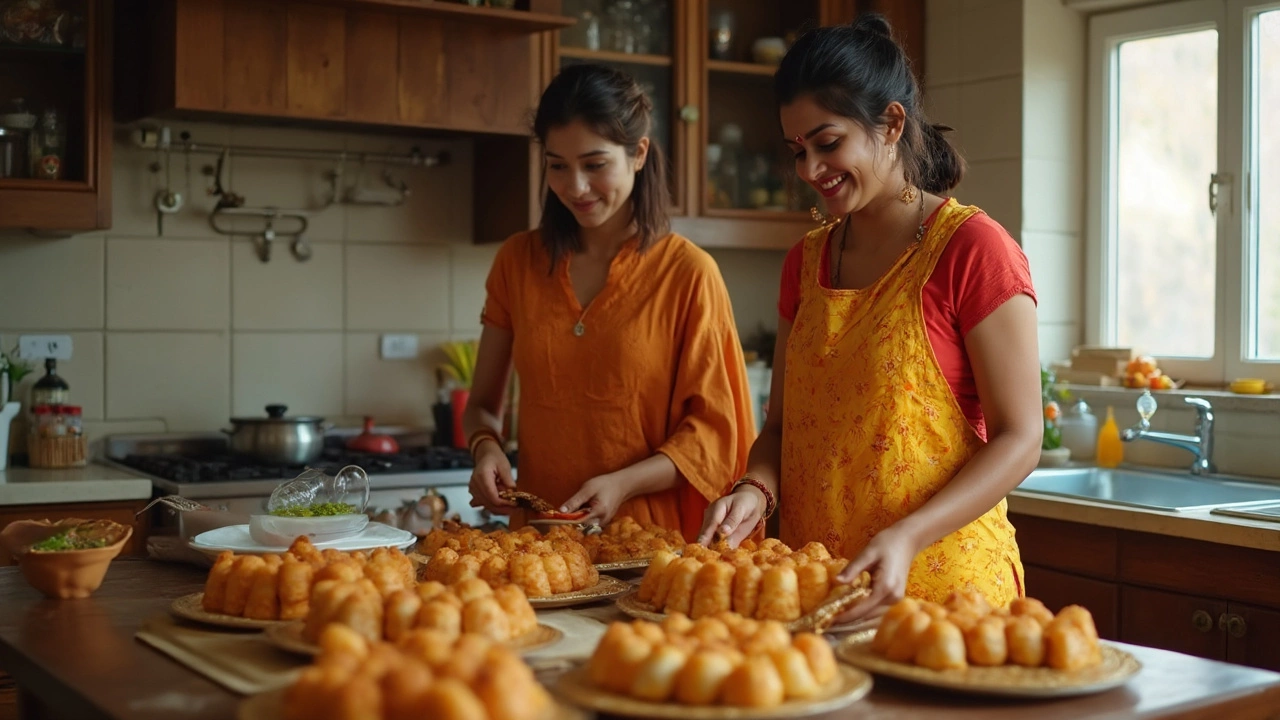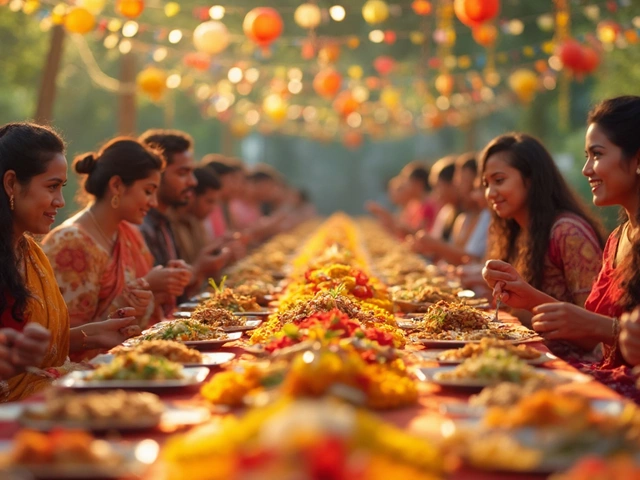
If you’ve ever peeked at the average wedding catering bill, the numbers can hit harder than a bouquet toss to the face. Rumor has it, wedding food costs secretly eat up one of the biggest chunks of the whole day’s budget—and that’s not even counting the cake. The big question for couples everywhere: how do you keep everyone happily fed, plus keep your wallet intact? The good news is, you can absolutely feed 100 people at your wedding without mortgaging your future. A little creativity goes further than you think. Let’s get into the real secrets.
Decoding the Cost: Where the Money Really Goes
Most folks are surprised when they see how much caterers charge per plate—half the time, it’s more than what you spend eating out at a decent sit-down restaurant. The number for 2024 is wild: the average catering price per head in the U.S. lands between $40 and $85. When you multiply that to feed 100 people, your food alone could gulp down $4,000 to $8,500 or more. Why is it so much? It isn’t just the food itself. You’re paying for shopping, prepping, labor, setup, serving, renting serving ware, and cleaning up. Don’t forget the chef has to factor in insurance, last-minute surprises, and sometimes even a cut for the venue. That’s a lot of hidden charges! Even buffet lines and family-style service often creep up in cost because staff still need to keep dishes fresh and stock platters.
Fancier menus mean higher costs. If you go for steak and salmon, your bill will skyrocket. Plated dinners add labor costs, since every guest is served individually. Alcohol is another major expense if you offer an open bar or specialty cocktails. On top of that, guest count plays a role even beyond food. More guests equals more rentals: more utensils, glassware, linens—some caterers even charge for salt shakers. The final trap? Cake-cutting fees, dessert surcharges, and "extras" (think coffee service, passed hors d’oeuvres). It’s all these little costs that balloon the bill.
Alright, so where do couples save? You can cut way back if you skip full-service caterers and take on some tasks yourself. Community halls, backyards, parks, or small event spaces often let you bring your own food, saving thousands. Limiting the menu to a few filling things helps control both cost and chaos. And yes, there’s no shame in shopping at wholesale stores or incorporating family-made recipes to give you that home-cooked vibe and a smaller tab. The big takeaway? Before signing any food contracts, double-check every detail—including those tricky per-plate and service fees. Sometimes the best catered wedding isn’t catered at all.
Crowd-Pleasing, Cost-Cutting Menu Ideas
Let’s talk menus. The goal: keep everyone happy, not hungry, with food that’s both filling and affordable. Some of the best budget weddings ditch three-course meals in favor of creative, crowd-friendly options. Ever heard of a taco bar? Tacos work for all diets, and people love customizing their food. You can prepare roasted meats or beans ahead of time, buy tortillas in bulk, and set up toppings like salsas, cheese, lettuce, and veggies in serve-yourself style. Dinner is done—and it’s fun.
Another winner: pasta bars. You’d be shocked how far a tray of ziti stretches, plus it’s vegetarian-friendly, fast to serve, and holds up great through the night. Add a couple of sauce choices—red, white, pesto—alongside bowls of garlic bread and big bowls of salad. Total cost per plate drops dramatically, and it’s easy for a small team (or family members) to handle the prep without pro chefs.
If you like rustic vibes, try barbecue or picnic-style spreads. Pulled pork, roast chicken, or grilled sausages work well for feeding large crowds. Pair with easy salads—think coleslaw, potato salad, pasta salad—plus a couple of vegetable sides. But what if you want something even simpler? Go with "heavy appetizers." Sometimes called a grazing reception, guests get their fill from a series of hearty snacks instead of a sit-down dinner. Sliders, meatballs, deviled eggs, chili, and even charcuterie boards can all be made in bulk and look beautiful when styled on grazing tables.
And don’t forget international inspiration. Mediterranean mezze, Indian curries, or even big pots of stew can serve a hundred people easily. Bulk grains like rice or couscous stretch proteins further, multiplying the impact of your food budget. Check warehouse club stores for discounts on bulk meat and veggies. Rotisserie chickens get underrated; you can shred and season them for salads, sandwiches, or tacos for less than half the price of prepping standalone entrees.
Time is just as important as money. Opt for recipes that can be prepped in advance and finished on the day with minimal stress. Chafing dishes (the metal trays you see at buffets) are a great investment—find them for under $20 each, and you’ll use them for years of parties to come. Always have extra food storage handy; leftovers mean you’ve nailed the quantity. The smartest weddings leave guests full, happy, and ready to party, not waiting in line forever or scavenging for snacks.

DIY vs. Hiring Caterers: Playing the Pros and Cons
Debating whether to go full DIY or use a professional? Time for some real talk. If you have a big family or lots of friends willing to help, self-catering reduces costs dramatically. A 2024 survey from The Knot showed that couples who went DIY with food reported spending as little as $1,200 for 100 people—sometimes less! Teamwork divides the prep and gives your menu a personal touch. Family recipes, homemade desserts, or even grandma’s famous lasagna become true highlights and conversation starters.
But—and this is a big but—DIY comes with real stress. You’ll need access to a commercial-sized kitchen or at least a few regular kitchens working in sync. Food safety and timing are critical, especially in summer (no one wants a case of wedding food poisoning). Prepping 10 trays of mac and cheese sounds easy... until you realize your oven only fits two trays at a time. You also need people to set out food, keep trays hot, refill beverages, and clean up. That’s a lot to manage while getting dressed up and celebrating. Still, if your circle is ready for the job, it’s hard to beat the savings.
Hiring a local caterer or restaurant can slash stress, but the prices rise fast. The best route for a budget is to go hybrid. Some couples hire a food truck or bring in a local eatery to handle one key part (like the main dish), then DIY the rest—salads, sides, or dessert. Potlucks work well for less traditional weddings: everyone brings their favorite dish, and you put together a feast. To organize it so you don’t end up with 50 potato salads, use a signup sheet and encourage variety. A note of caution: Not all venues allow DIY food, so check your contract before making plans.
Clever outsourcing can help, too. Grocery store catering platters, Costco sandwich trays, or restaurant takeout can fill in gaps without breaking the bank. Many chains offer bulk discounts for large orders—you just need to plan ahead. Whatever way you go, don’t be shy about asking for help. Assign jobs: one friend manages kitchen timing, another handles setup, a few are on cleanup duty. The magic formula is preparation; if you’re organized, you’ll pull it off with less stress than expected, and your guests will never know how little you spent.
Tips for Saving Big Without Skimping on Flavor
Let’s cut to the chase: where exactly do you save the most cash when feeding a big wedding crowd? Start with your venue. Look for places that let you bring your own food or choose outside vendors; these locations offer the most freedom for a budget-friendly wedding. Instead of serving expensive proteins like beef or seafood, focus on hearty grains, beans, chicken, or vegetarian dishes. Lentil chili, baked ziti, or roasted vegetable lasagna make for filling mains at a fraction of the cost.
Avoid meal "extras" that rack up costs. You actually don’t need courses and courses of food. Limit alcohol offerings to beer and wine, with a single signature cocktail if you like. Self-serve beverage dispensers with iced tea, lemonade, or fruit water look festive and are far cheaper than a full bar. For dessert, consider skips on the multi-tiered fondant cake—sheet cakes or cupcakes from a local bakery are just as delicious, way cheaper, and much quicker to serve.
Shop smart. Wholesale clubs (like Costco or Sam’s Club) offer enormous savings on meat, cheese, produce, and even baked goods. Local restaurant supply stores often sell to the public and can save you a fortune, especially on party-sized trays, paperware, and disposable cutlery. Plan your shopping list in advance—calculate needed portions, and always factor in at least 10% extra (everyone eats more at weddings, especially after dancing!). If you’re prepping food yourself, freeze what you can ahead of time. Make-ahead casseroles, slow-cooker recipes, and salads that keep overnight are lifesavers.
Serving style matters, too. Buffets or stations are often the cheapest way to feed 100 people, since guests serve themselves and you can stretch food further than with plated meals. Family-style works for more intimate gatherings, encouraging conversation and less waste. When it comes to rentals, look for secondhand plates, glassware, or even compostable disposables to cut down on costs and cleanup. In warm weather, skip hot entrees and offer a "picnic" menu. Hearty sandwiches, salads, fruit, and snack boards make it easy for guests to grab food and get back to the party.
And, honestly, don’t try to do it all yourself. The day goes fast—delegate as much as possible, prep ahead, and most of all, be flexible. Your loved ones remember good food, but it’s the fun and connection that stay with them. Feeding 100 people well isn’t about fancy extras; it’s about sharing food, laughter, and joy together. And yes—it’s possible to do it on a shoestring, without sacrificing flavor or style. Who wouldn’t toast to that?


Comments
Post Comment